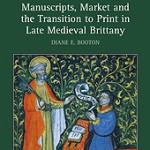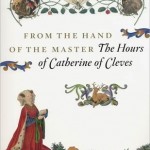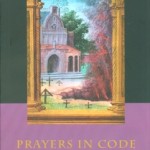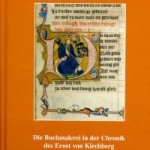Ghent University (B)
September 21-22, 2010
The Department of Dutch Literature of Ghent University, the Department of Dutch Language and Culture of Radboud University Nijmegen and the Ruusbroecgenootschap (University of Antwerp) will hold an international conference on the transformation of texts and textual complexes in the medieval Netherlands. We hereby invite paper proposals exploring this theme.
Theme
Texts are subject to transformation, especially during the Middle Ages. The medieval textual culture was a manuscript culture that was characterized in a unique way by variance. Every new copy offered the scribe the possibility to adapt the text to new contextual circumstances. Central questions will therefore be: what happened to a text when it arrived outside the context where it originated? Why were texts varied in the Middle Ages? How did changing circumstances lead to adaptations within a text, so that it would function in an optimal way in its new context? How did the influence of the context manifest itself in medieval texts? Why were some texts not adapted, even when the circumstances seem to be perfect to provoke a change? These questions do not have to be limited to individual texts. One could think of larger textual complexes as well, such as manuscripts and book collections (libraries), as they were also subject to transformation and reveal in their composition a dynamic that is connected to contextual changes.
We invite you to submit a proposal for a paper that relates to the contextual shift of medieval texts within and from the Netherlands, and to elaborate on the whys and wherefores of the accompanying changes. What happened to texts when institutional changes occurred? How did the transition to another medium (from manuscript to print or vice versa) affect the text? In some cases, it is even possible to study a medieval text that has been handed down for a long(er) period. It would be interesting to observe the successive shifts within such a text. Next to these breaks of medium or context which stimulated transformation, the function and meaning of texts or textual complexes could also undergo changes when they got in the hands of a new user. This one could for instance make corrections and notes, which changed the meaning of the texts. A new owner could fit the texts in his (book) collection in a different way, and thus transform the nature of his collection and change the meaning of the texts.
The conference expressly intends to link interesting cases to methodology and the development of theories. The theme we have presented here has indeed been strongly emphasized within the so called New or Material Philology, and even earlier, within the überlieferungsgeschichtliche Forschung. These approaches have heavily influenced researchers in the last decades, but not everything that seems theoretically significant is also practicable. We could therefore ask: what are the possibilities of this source-orientated approach and at what point do we reach its borders? To what extent may we draw conclusions on the meaning and the function of manuscripts and book collections or on the profile of the owner, on the basis of the composition of a manuscript or a collection? To what extent may we draw conclusions on the meaning of a text and on the profile of the scribe, on the basis of changes in the text and on marginal notes?
An approach that wants to do justice to the original textual culture in the Netherlands cannot be limited to texts in only one language. At the scribe’s desk, in miscellanies and in book collections, texts in different languages were present. That is why we are not focusing attention solely on Dutch literature; we also want to include texts in other languages (Latin, French, German …) that were written and/or received in the Netherlands. In addition, we want to draw into the conference the Dutch literature that has been received in other regions.
Texts are subject to transformation, but the nature, reasons and interpretations of the changes, still remain to be studied.
Confirmed Keynote
Stephen G. Nichols, James M. Beall Professor of French and Humanities, Johns Hopkins University (USA)
Guidelines
Paper proposals (max. 250 words) can be sent to stabilityandtransformation@gmail.com before February 9, 2010. Presentations should be 20-30 minutes long. The official language at the conference will be English.
Organising Committee
Dirk Coigneau (Ghent University)
Youri Desplenter (Ghent University)
Renée Gabriël (Radboud University Nijmegen)
Thom Mertens (University of Antwerp)
Johan Oosterman (Radboud University Nijmegen)
Ulrike Wuttke (Ghent University)
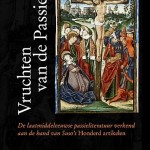 AELST, José van, Vruchten van de passie. De laatmiddeleeuwse passieliteratuur verkend aan de hand van Suso’s Honderd artikelen. Hilversum, Verloren, 2011 (Middeleeuwse Studies en Bronnen: 129). 352 pp., b/w ills. ISBN 978-90-8704-222-6. € 35.
AELST, José van, Vruchten van de passie. De laatmiddeleeuwse passieliteratuur verkend aan de hand van Suso’s Honderd artikelen. Hilversum, Verloren, 2011 (Middeleeuwse Studies en Bronnen: 129). 352 pp., b/w ills. ISBN 978-90-8704-222-6. € 35.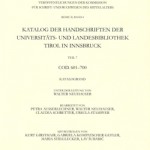 AUSSERLECHNER, Petra, Walter Neuhauser, Claudia Schretter & Ursula Stampfer, Katalog der Handschriften der Universitäts- und Landesbibliothek Tirol in Innsbruck. Teil 7: Cod. 601-700. Wien, Verlag der Österreichischen Akademie der Wissenschaften, 2011 (Veröffentlichungen der Kommission für Schrift- und Buchwesen des Mittelalters: II.4). 2 vols. (Katalogband and Registerband), 494, 136 pp., ills. ISBN 978-3-7001-6899-7. With cd-rom. € 139.
AUSSERLECHNER, Petra, Walter Neuhauser, Claudia Schretter & Ursula Stampfer, Katalog der Handschriften der Universitäts- und Landesbibliothek Tirol in Innsbruck. Teil 7: Cod. 601-700. Wien, Verlag der Österreichischen Akademie der Wissenschaften, 2011 (Veröffentlichungen der Kommission für Schrift- und Buchwesen des Mittelalters: II.4). 2 vols. (Katalogband and Registerband), 494, 136 pp., ills. ISBN 978-3-7001-6899-7. With cd-rom. € 139.
